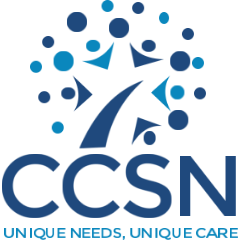
The world of autism can be overwhelming to navigate: which treatments work? Which are proven to be effective? Which could be harmful? What is best for my child?
While there is no “magical cure” for autism, there are well documented, evidence-based interventions (meaning that they are supported by credible research studies) that have proven effective in treating individuals with Autism Spectrum Disorders (ASD). Understanding what good, evidence-based intervention is versus what it isn’t can be a stress-inducing challenge for parents of a child with ASD.
In order to support families in knowing how to sift through all the treatments claiming to be helpful for individuals with autism, we have put together a list of 10 things to look for when presented with a new potential treatment for your loved one.
- Does the treatment claim high success rates or rapid effects?
- Things like, “Works in 3 weeks!” or “Completely transformed my child in a matter of days!” may be red flags for fad treatments.
- Are the claims of success based on the credentials of the promoter?
- For example, do they highlight their own expertise without providing research to support? Do they rely on their well-known or celebrity status?
- Does the promoter have a profit-motive? Are they selling something that supports their treatment methodology?
- Has the treatment or intervention been tested? Have results been published in a peer-reviewed or academic journal? These journals have experts review the research and then decide whether to publish it based on its quality.
- Do the promoters call other proven treatments inferior?
- Are there many testimonials, anecdotes, or personal accounts but no objective evidence?
- Statements like, “My nonverbal son started talk after starting this treatment!” can be intriguing, but it is important to be careful of these claims, especially when testimonials are the only “proof” that it works.
- Do they use too much technical language in an attempt to confuse you?
- Watch for confusing statements like, “A unique system that develops reciprocal relationships and targets episodic memory, cognitive capacities, and neurocognitive deficits.”
- Vague claims such as a statement that the product will “open learning channels” or “reorganize/balance the brain or cognitive functions” are also important to watch for.
- Is “believing” or “faith” in the treatment needed for it to work?
- Some treatments rely on people already believing that something will work. In order to fit that belief, data may be made to look like it supports it.
- Do the promoters use catchy or emotionally appealing language or graphics?
- Appealing to belief in miracles or claiming easy cures or reversals of conditions are more things to watch for.
- Also look for graphics showing a changing brain or brightly colored charts. These might look appealing but may not be based on actual research and should be further investigated.
You want the best for your child, and there are so many choices related to treatment. If you are presented with a treatment option and you are unsure whether it is effective or a fad treatment, ask yourself the questions above and/or reach out to professionals you trust!
Learn about CCSN’s approach towards treatment here
Some resources that can support you to identify potential best treatments are:
Association for Science in Autism Treatment
National Standards Project from the National Autism Center

